Suspension Trauma in Fall Protection: What Safety Managers Must Know
Working at height is one of the most regulated and hazardous areas. According to data from the Occupational Health and Safety Administration (OSHA), falls caused 37% of all construction deaths in 2021. Fall protection equipment is designed to save lives, but it introduces another critical risk that often goes overlooked: suspension trauma.
Suspension trauma can set in under five minutes after a fall and cause life-altering injuries, or even death, to a worker.
For Safety Managers and EHS professionals, understanding suspension trauma, and how to plan for it, is essential for OSHA compliance and for protecting workers in the event of a fall.
In this article, we’re going to cover everything you need to know about suspension, dispel common myths about suspension trauma, and how proper engineered fall protection systems and rescue plan can save your workers.
Here’s what we’ll go over:
- What Is Suspension Trauma in Fall Protection?
- Why Is Suspension Trauma Dangerous for Workers at Height?
- What Does OSHA Require for Suspension Trauma and Rescue Plans?
- How Can Employers Reduce the Risk of Suspension Trauma?
- How Fast Can Suspension Trauma Set In?
- Next Steps: How Mazzella Can Help With Suspension Trauma and Fall Protection
- Suspension Trauma FAQ
What Is Suspension Trauma in Fall Protection?
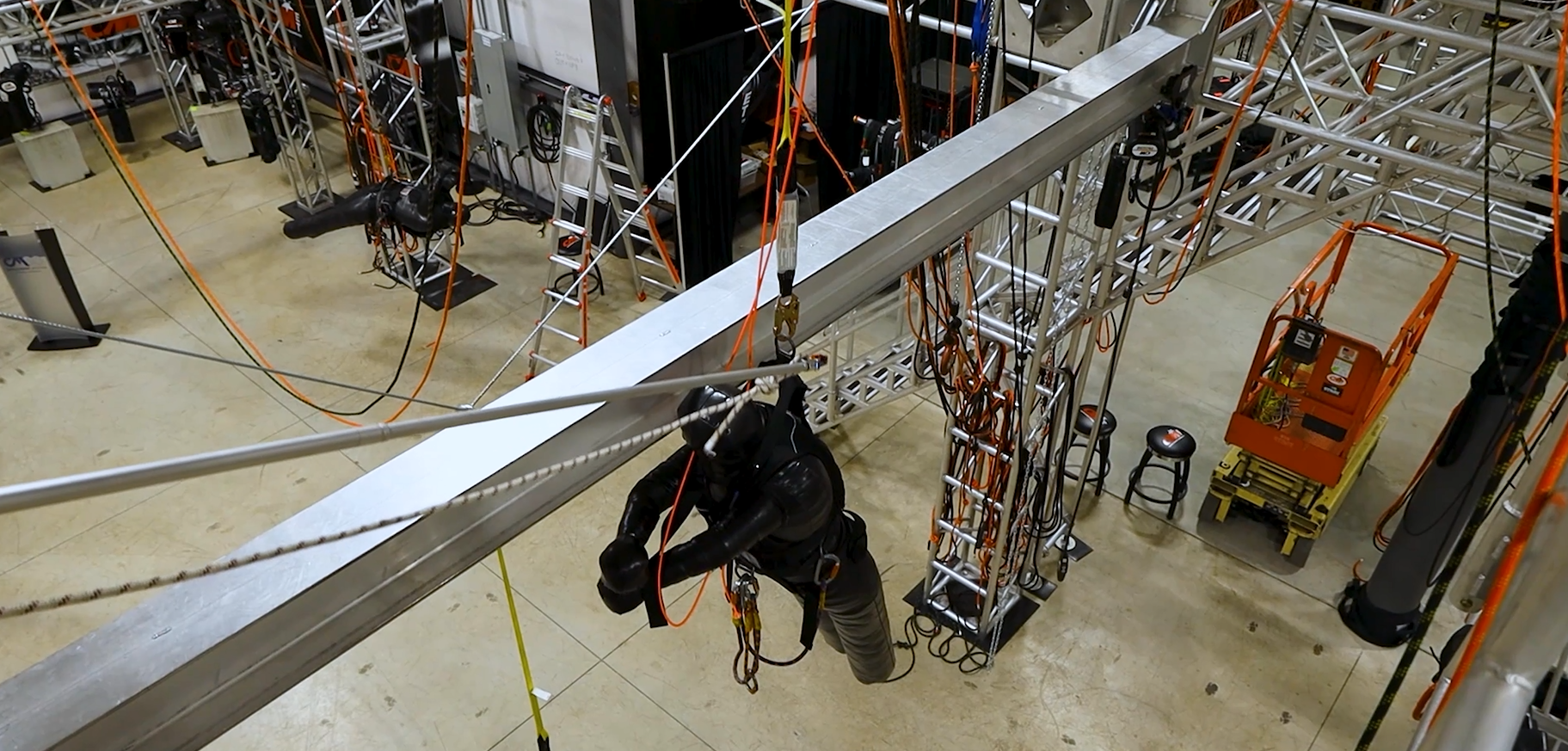
Suspension trauma occurs when a worker is suspended motionless in a fall protection harness after a fall arrest.
In this position, the leg straps of the harness press against the femoral arteries and veins. This restricts blood flow, causing blood to pool in the legs and reducing circulation to vital organs. If not corrected quickly, the worker can lose consciousness—and without timely rescue, the condition can be fatal.
According to OSHA, suspension trauma can begin in as little as five minutes after a fall. The exact time frame depends on several factors, including:
- Body type, size, and weight
- Proper harness fit and adjustment
- Type of fall arrest system (rigid rail vs. horizontal lifeline)
- Duration of suspension and environmental conditions
Why Is Suspension Trauma Dangerous for Workers at Height?
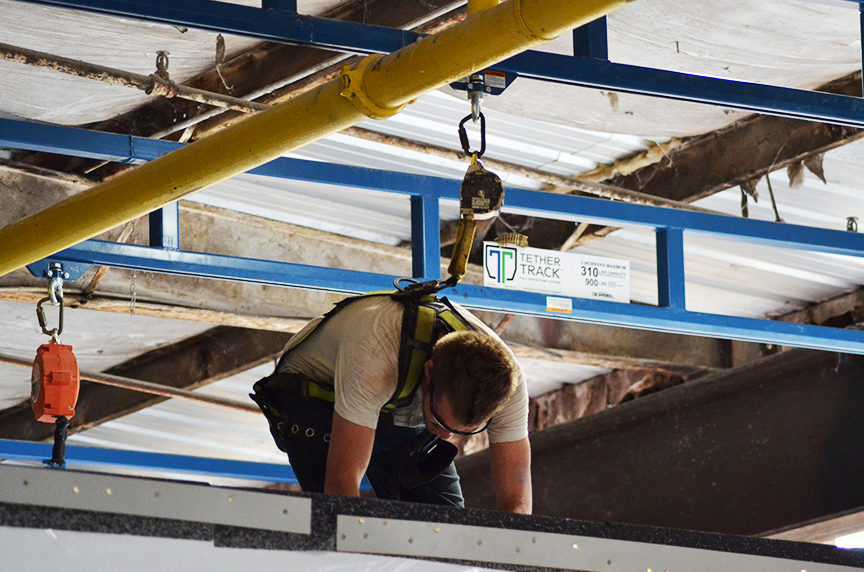
The danger of suspension trauma lies is how rapidly it can set in. Once circulation is restricted, the body cannot return blood to the heart and brain. A worker may feel lightheaded, experience numbness, or become confused. Within minutes, unconsciousness can occur.
If a worker remains suspended without rescue, the lack of oxygen-rich blood to vital organs can lead to cardiac arrest and death.
Even short suspension events can have serious consequences if workers are not rescued promptly or if they are not trained to use their equipment properly.
Venous Pooling
Many falling workers can experience venous pooling, which is where their leg veins are not allowing blood to flow back to your heart. This causes blood to collect in your legs, resulting in intense swelling and discomfort.
In many cases, the worker will pass out from the impact and go into shock. Falling workers can also develop blood clots when hanging suspended in a harness, which can travel to your lungs and/or brain, causing a pulmonary embolism or a stroke.
They can also suffer from cardiac arrest or brain damage. Or even worse, death, which is where a rescue plan is crucial.
What Does OSHA Require for Suspension Trauma and Rescue Plans?

OSHA’s fall protection standard (29 CFR 1926.502) requires employers to have a rescue plan for workers at height. This is not optional. A rescue plan must outline how fallen workers will be retrieved promptly to prevent suspension trauma.
A strong rescue plan should be:
- Site-specific: Hazards vary by job site, so a one-size-fits-all plan is not effective.
- Integrated with the Job Safety Analysis (JSA): Rescue procedures must be part of everyday planning and hazard assessments.
- Practical and practiced: Equipment, personnel, and procedures must be ready, and drills should confirm workers know what to do.

How Can Employers Reduce the Risk of Suspension Trauma?
There are several ways to reduce the risk of suspension trauma in a fall protection program:
Provide Harnesses With Suspension Relief Straps
Many harnesses include built-in suspension relief straps, which can be deployed after a fall. This allows the worker to place their feet in loops and push upward. This reduces pressure on the arteries and veins, slows pooling, and buys critical time for rescue teams.
Train Workers on Proper Harness Fit and Adjustment
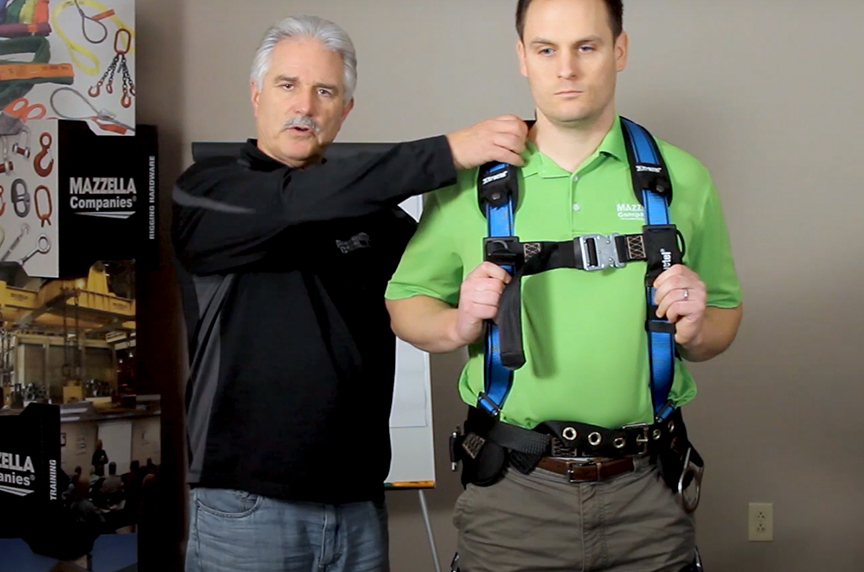
Harnesses do not fit the same way every day. Workers should be trained to inspect and adjust their harnesses before each use. Factors such as hydration, body weight, and clothing can change how a harness fits, and a poorly adjusted harness increases the risk of trauma.
Choose the Right Fall Arrest System for the Job
Rigid rail systems minimize fall distance and suspension time compared to horizontal lifelines, which introduce slack and sag. Safety managers should evaluate which system best reduces risk in their facility or job site.
Develop and Practice an OSHA-Compliant Rescue Plan
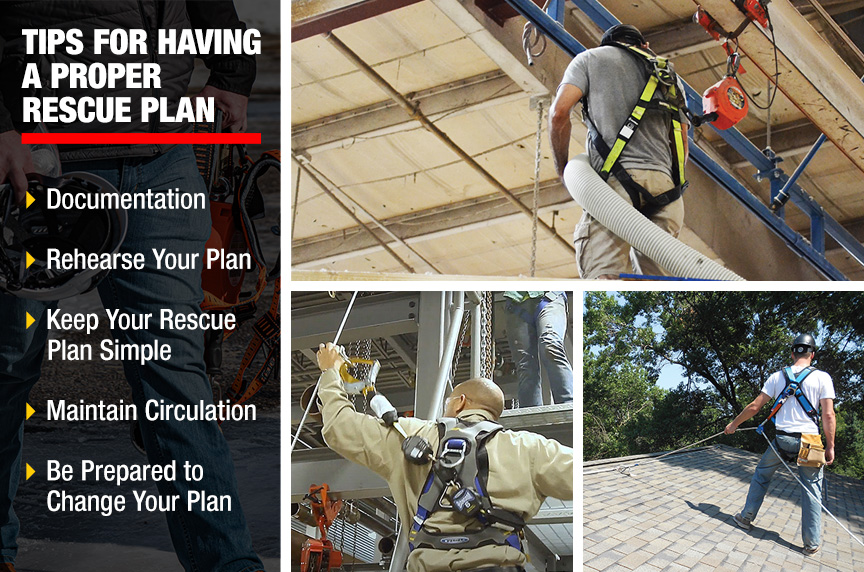
The fastest way to reduce suspension trauma risk is through an effective working at height rescue plan. This may include:
- Self-rescue using SRLs with retrieval functions
- Assisted rescue with poles, winches, or lowering devices
- Team-based rescue protocols practiced regularly
On top of having a rescue plan in place, your team should also be practicing your rescue plan and documenting your processes for easy reference.
How Fast Can Suspension Trauma Set In?
Suspension trauma can occur in under five minutes depending on body type, harness fit, and system setup.
Safety managers should not assume that “short hang time” means low risk. Every second counts once a worker is hanging in a harness.
Best Practices for Preventing Suspension Trauma on the Job
Suspension trauma is preventable but only if safety managers recognize it as a serious risk and proactively build safeguards into their fall protection program. That means:
- Training workers on harness use and fit
- Choosing equipment that minimizes suspension risk
- Ensuring every worker has access to suspension straps
- Developing, testing, and enforcing a rescue plan
Mazzella offers training, compliance assistance, and consulting to help organizations design fall protection systems and rescue plans tailored to their unique hazards.
Next Steps: How Mazzella Can Help With Suspension Trauma and Fall Protection
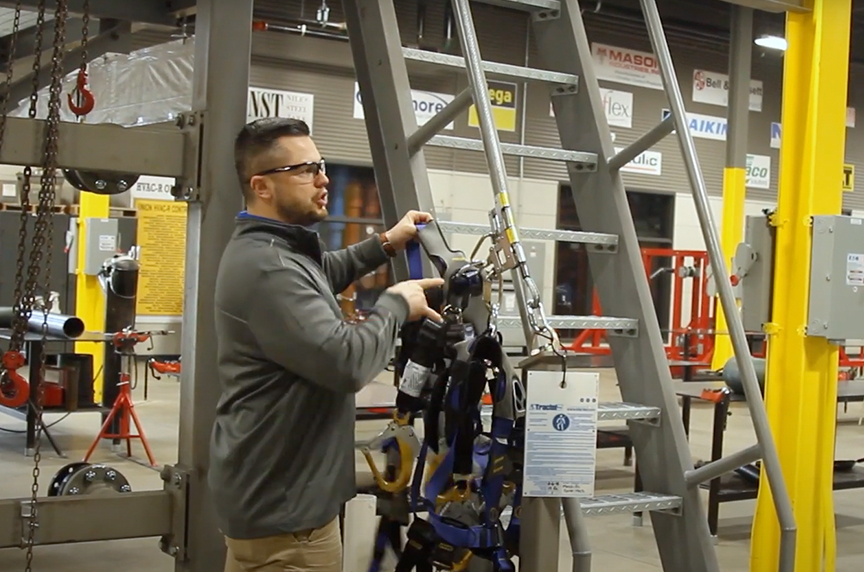
If you’re responsible for worker safety at height, don’t wait until an incident happens to think about suspension trauma.
- Review your current fall protection program and rescue plan.
- Evaluate whether your workers’ harnesses include suspension straps.
- Train your team to recognize and respond to suspension trauma risks.
Need help with your fall protection program or rescue planning?
Mazzella’s fall protection experts can assist with equipment, training, and compliance support to keep your workers safe and your site OSHA-compliant. We can also assist you in creating an OSHA-compliant rescue plan.
Suspension Trauma FAQ
What is suspension trauma in fall protection?
Suspension trauma, also called harness hang syndrome or orthostatic intolerance, occurs when a worker is left hanging motionless in a safety harness after a fall. Blood flow is restricted in the legs, which can quickly reduce circulation to the heart and brain.
How quickly can suspension trauma set in?
OSHA notes that symptoms can begin in as little as 5 minutes. The exact onset depends on body type, harness fit, fall arrest system design, and environmental factors.
Why is suspension trauma so dangerous?
The restricted blood flow can lead to dizziness, unconsciousness, and—if the worker is not rescued quickly—cardiac arrest and death. Even a short period of suspension can be life-threatening without a rescue plan.
What does OSHA require regarding suspension trauma?
OSHA’s fall protection standard (29 CFR 1926.502) requires employers to have a site-specific rescue plan. Rescue procedures must be integrated into the Job Safety Analysis (JSA), practiced regularly, and capable of retrieving suspended workers promptly.
What are the symptoms of suspension trauma?
Common signs include lightheadedness, numbness in the legs, nausea, confusion, and fainting. Workers may not recognize the severity before losing consciousness.
How can employers reduce the risk of suspension trauma?
- Train workers on proper harness fit and inspection
- Use harnesses with suspension relief straps
- Select fall arrest systems that minimize suspension time (e.g., rigid rails)
- Develop, test, and enforce a rescue plan
Copyright 2025. Mazzella Companies.

